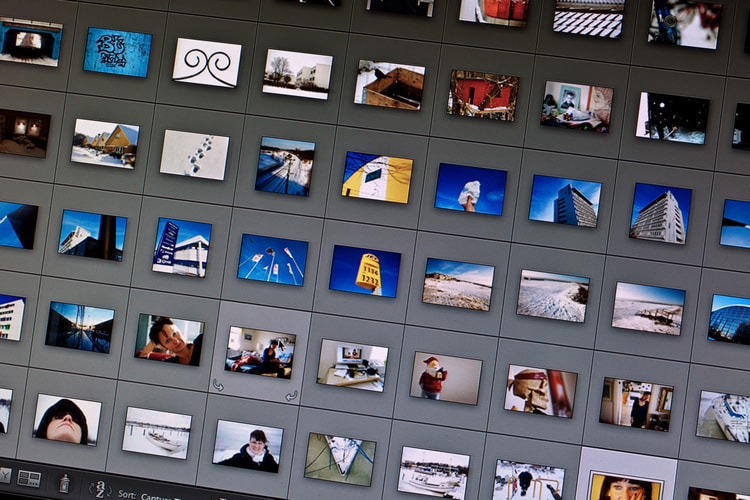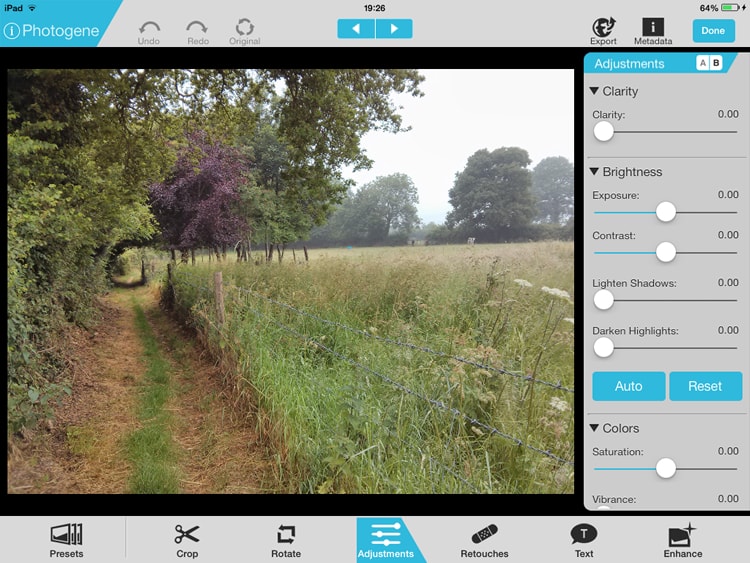The Future Of Photo Editing?
Much as I’m loath to admit it — given my dislike of the digital processing workflow — editing is as important to a finished image as the work done with the camera.
This, of course, isn’t a modern revelation; Ansel Adams spent hours painstakingly cutting, burning and dodging his images to get just the right balance of tones. But it is only digital manipulation that has truly entered mainstream consciousness, a fact that can mostly be attributed to the accessibility — both in terms of usability and retail price — of Photoshop and Lightroom.

image by Håkan Dahlström
For more than a decade now, photographers have been squinting at masking brushes, and fiddling with curves — tasks which have traditionally required the significant computing power that only a computer could provide. Now, however, it is perceptions and habit, rather than technologies, which keep us at our desks. Today’s mobile devices are just as powerful as yesterday’s computers, while web browsers are capable of running web-apps that are every bit as advanced as native apps. Yet we’re still shackled to Adobe, even in situations where such a hefty, lumbering and expensive editing suite is completely unnecessary.
So why is it that so few of us are interested in the new breed of image editors? I would say there are a couple of main factors in play.
Trust
The first is a trust in quality. Mobile hardware and software has, until very recently, lagged behind the speed and function available on desktop, and browser-based editing suites have been hampered by slow internet connections and inadequate web standards. For some time, Photoshop was, quite legitimately, the best editing option available. As a result, many of those who attempted early adoption of alternative editing methods found the results to be disappointing — myself included.
To this day, a PC equipped with Photoshop is still the best option for complex by-hand adjustment. But for the majority of the images taken by the majority of photographers, a full-blown editing suite simply isn’t necessary. What’s more, the quality provided by many of Adobe’s competitors is indistinguishable from the “real thing” — even under the scrutiny of the most officious pixel-peeper.
Culture
Another key factor in the poor uptake of new editing methods is culture.
The photographic world likes to see itself through the warped lens of fine artistry, uniqueness and creativity. In reality, though, the few world-renowned pros at the top lead the bulk of the population below when it comes to kit and technology.
My evidence for this trend? Photoshop itself. It isn’t an editing suite that is strides ahead of the competition in terms of the average photographer’s needs. But Photoshop was the original choice of the top pros (thanks mostly to its technological head start) and everyone else followed, and continues to follow. This trend encouraged the creation of tutorials and plugins, providing further impetus. And so the self-fulfilling loyalty to Photoshop remains as the status quo.
The Alternative
And my point is? I’d like to see more photographers judging for themselves whether the new breed of editing options is up to the task, and judging for themselves as to whether Photoshop really is the best way of enhancing their images.

screenshot of the Photogene iOS app.
Take Photogene, an iOS editing app, as a representative of the alternatives. Just the description alone would put off many people, but hear this: along with the basic adjustments you might expect, Photogene also provides RAW compatibility, non-destructive editing and high level editing tools such as curves. An in-app upgrade later, and you’ll also have access to watermarking, IPTC data editing, masking overlays and JPEG compression adjustment. All of this comes packaged in a human-friendly touchscreen interface, and it will cost you the princely sum of… $0.99.
This isn’t a sales pitch, even if it reads like one. It is, quite simply, a factual assessment of the advanced nature of modern mobile editing. Plenty of folks already use mobile apps for their editing needs, and I think that the majority of photographers could do likewise, if only they tried and trusted these apps.
Not that editing needs to be that hands-on at all. Artistic apps such as VSCO Cam (also on Android) may be known for their filters, but they actually offer pretty much all the editing options a photographer needs, apart from significant manipulations.
But this is also intelligent editing. As you brighten an image or reduce contrast in VSCO, you’re working on a scale of 12. We’re used to being able to move sliders by the single number or percentage point, but you’d be surprised by just how irrelevant those numbers are to the finished image. Chris Ozer, Kurt Rahn and Kevin Russ seem to do perfectly fine without them, anyway.
Mobile systems are not necessarily available to everyone, I realize, but pretty much everyone can benefit from the recent innovations in browser-based editing. Google+, best known as the Facebook-like Facebook alternative, was a very powerful cloud photo hub (sadly it is no more). This was thanks to NikSoftware (known for the Efex Pro series and Snapseed) which, nowadays, is a subsidiary of Google. In recent months, NikSoftware has been put to work on the search giant’s social network, and the result is impressive photo handling technology. Google+ is now optimized to convert RAW files from 70 different cameras, and the Edit button above every picture holds what is, in essence, Snapseed’s editing suite, ready to be used in the cloud.

developing RAW images in browser is made possible with Pics.io.
However, in my view, the most exciting browser editing suite is yet to come — well, yet to come out of alpha testing, anyway. Pics.io is still a work in progress, but it is already capable of applying detailed adjustments to RAW images (note: the original file, as placed in your Google Drive, not a JPEG conversion). It still has some way to go, but given time, it will be an incredibly powerful method of editing online.
If you’re not ready to make the jump away from native apps, there are still some lighter, nimbler options available. Camerabag 2, for instance, provides a far more user friendly experience than any large editing suite, yet pretty much every commonly used editing option is included.
Outlook
I’m not pretending that Photoshop is going anywhere fast. I use it on a daily basis. But, increasingly, I find myself only opening the editing beast to resize or sharpen an image.
Maybe you’re the kind of photographer who actually likes manipulating images, in which case, don’t let me get in your way. But for the rest of us, the editing landscape is wide open – I urge you to go and explore.
